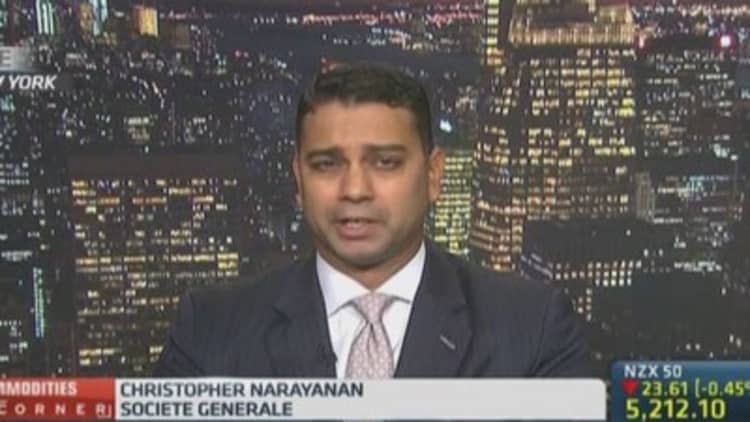The world may not be able to feed itself by 2050 if it doesn't increase food productivity, according to a report released Wednesday.
The report, from the Global Harvest Initiative, states that with a world population expected to be at least 9 billion people in 2050, the demand for food, feed, fiber and fuel will likely outpace food production if the current rate of output remains the same.
"This is a call to action," said Margaret Zeigler, executive director of GHI, a private sector agriculture group with members that include Monsanto, John Deere, DuPont and the World Wildlife Fund.
"Countries need to prioritize agriculture and the growing of food in more sustainable methods," Zeigler argued. "If we don't start now, we'll have a problem sooner, even by 2030."
Zeigler explained that GHI has done reports on global food productivity over the last five years, but this is the first time the analysis has found food output a major concern.
Doing nothing, Zeigler said, would force hardships on the world's smaller and poorer farmers, who would likely suffer rising food costs as food supplies fail to meet demands.
Read More
It could also damage the environment, she said, by reducing water levels as that resource becomes scarcer from overpopulation and its increased use in agriculture. And sitting still could add to climate change, she said.
"We're also going to see more levels of methane emission from cattle if we don't learn how to produce more using less or the same resources," Zeigler said.
Agriculture gaps in India, Africa
The report's regional analysis uncovers what it calls significant productivity gaps in agriculture:
- At the current rate of agricultural productivity growth in India, domestic production will only meet 59 percent of the country's food demand by 2030.
- In East Asia, only 67 percent of food demand by 2030 will be met from within the region if the current rate of productivity growth is maintained.
- At current rates of productivity growth, Sub-Saharan Africa is projected to meet only 15 percent of food demand in 2030, which will require significant imports, or food assistance, or opening up new land to development that may not be suitable for sustainable production.
"As the population grows and more people move into the middle class in these areas," said Zeigler.
"They will eat beef, poultry and more dairy products," she said. "That's good for nutrition, but it puts more stress on food resources."
Read More
But at least one area should be able to feed itself and others, according to the study: Latin America
Overall regional production there is expected to exceed demand, with Argentina, Brazil, Chile, Paraguay and Uruguay leading this increase in productivity.
The report said that the region will likely serve as a critical source of food and agricultural supply to meet the demand of Asia's growing and more affluent and urban population.
Food system 'at risk'

As for ways to increase agricultural productivity, Zeigler said ideas include genetic modified organism seeds (GMOs) of which Monsanto is the world's largest producer—but she added that all methods should be up for discussion.
Zeigler added that more women in many countries need to be involved in farm production, not only to help increase output but to raise their incomes, which in places such as India, are traditionally low, she said.
"We need a mix of practices, including technologies that are tailored for farmers in their areas," she said. "That means working on ideas like proper soil analysis and water conservation."
Read MoreCalifornia drought's new target: The great pumpkins
But not everyone in farming looks at technology as a cure-all for more food.
"There's no evidence that GMOs significantly increase yields of crops, as many of its proponents claim," said John Kempf, a farmer in Oho and CEO of Advancing Eco Agriculture, a soil nutrition consulting firm.
"It's too early to tell if all this technology is good or not for farming," Frank Aragona, CEO of Agricultural Innovations, an information source for agricultural strategies.
Aragona, who has a master's degree in forestry, said the worry is that large farm operations can more easily afford the new high-tech advances, while smaller farms can't, creating a technology gap of sorts.
Putting aside the battle over GMOs and whether technology can help feed the world, most experts agree that increasing food production is imperative.
"The world's entire food system is at risk if we don't act," Zeigler said.


